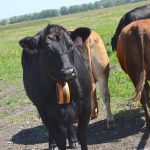Flies cost Canada’s cattle industry an estimated 20 percent in lost productivity per year.
New findings at Agriculture Canada’s Lethbridge Research Centre in Alberta have identified five novel strains of bacteria to be effective against horn flies and stable flies, the two major biting fly species that attack cattle.
The bacteria are unique because they kill adult flies, as well as larvae, and tests indicate they are safer and more effective than current control applications.
Further testing is under way to pinpoint which types of bacterial toxins are most effective, said researcher Tim Lysyk, who is conducting the project.
Read Also

Trump cuts off trade talks with Canada
(Reuters) – U.S. President Donald Trump said on Thursday that all trade talks with Canada were terminated following what he…
“We want to identify why some of the bacterial isolates are more toxic to the flies than others,” said Lysyk, a livestock entomologist.
“This will help us evaluate strains that are the most practical for commercial use.”
If commercialized, the bacteria would be the first used for biological control of cattle pests in Canada.
Varieties of bacteria are used against pests in crops and forestry, but limited research has been conducted to investigate their potential for livestock pest control.
“Biological control using bacterial pathogens has a lot of potential for cattle producers as a valuable method for controlling flies,” said Lysyk.
“Currently, there are few insecticides registered for use against larvae and they tend to be relatively ineffective.”
The bacteria produce toxins that poison fly larvae that ingest them.
Attack adults too
Study results show the new strains can also poison adult flies when mixed with blood or another protein bait.
“The potential for use against adult flies is very exciting because these bacteria are generally used against larvae,” said Lysyk. “This means we can develop a more effective control.”
The bacteria are naturally occurring in the environment and show good selection and effectiveness for the groups they attack, he said.
By comparison, chemical insecticide applications are non-selective and often less effective.
“Chemical insecticides are applied to manure, which is not very effective because the microbes in manure break them down quickly. And they often have non-target effects. They will kill off mites, wasps or other predatory insects that they come in contact with.”
Most control methods for livestock pests rely heavily on the use of chemical pesticides, but increasingly research is aimed at integrated strategies that emphasize more environmentally sustainable methods, such as biological control.
That research is becoming more important as flies develop resistance to chemical insecticides.














